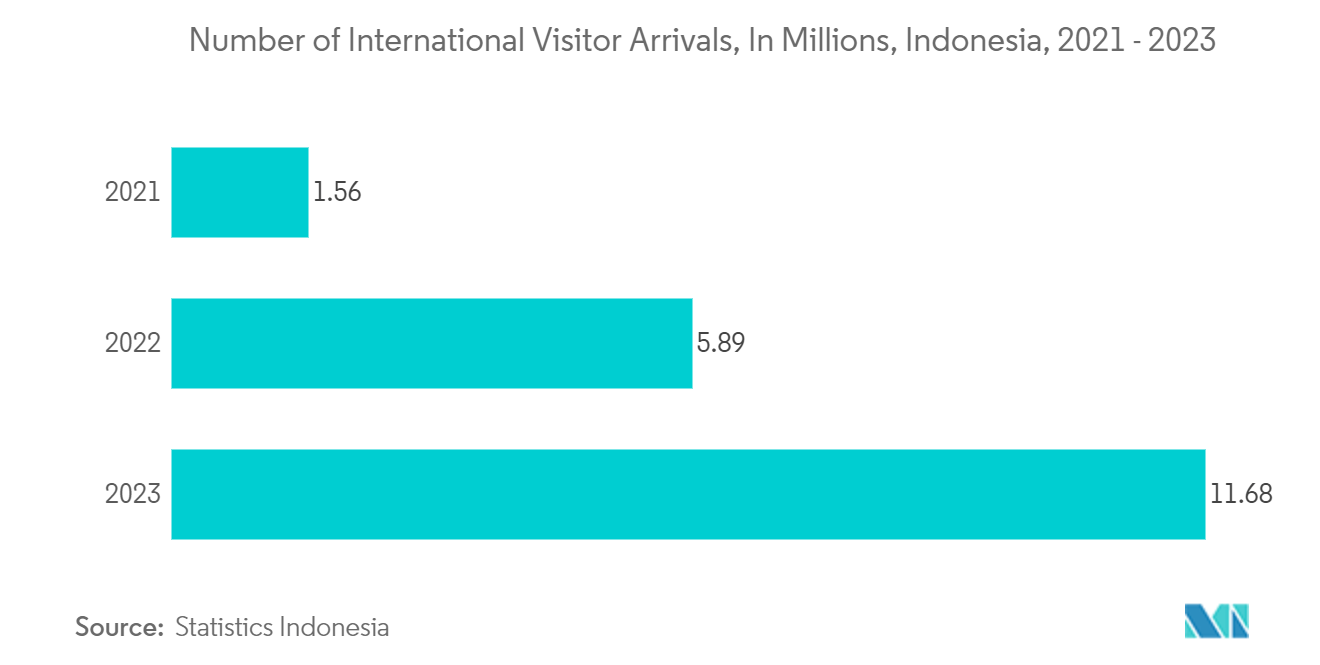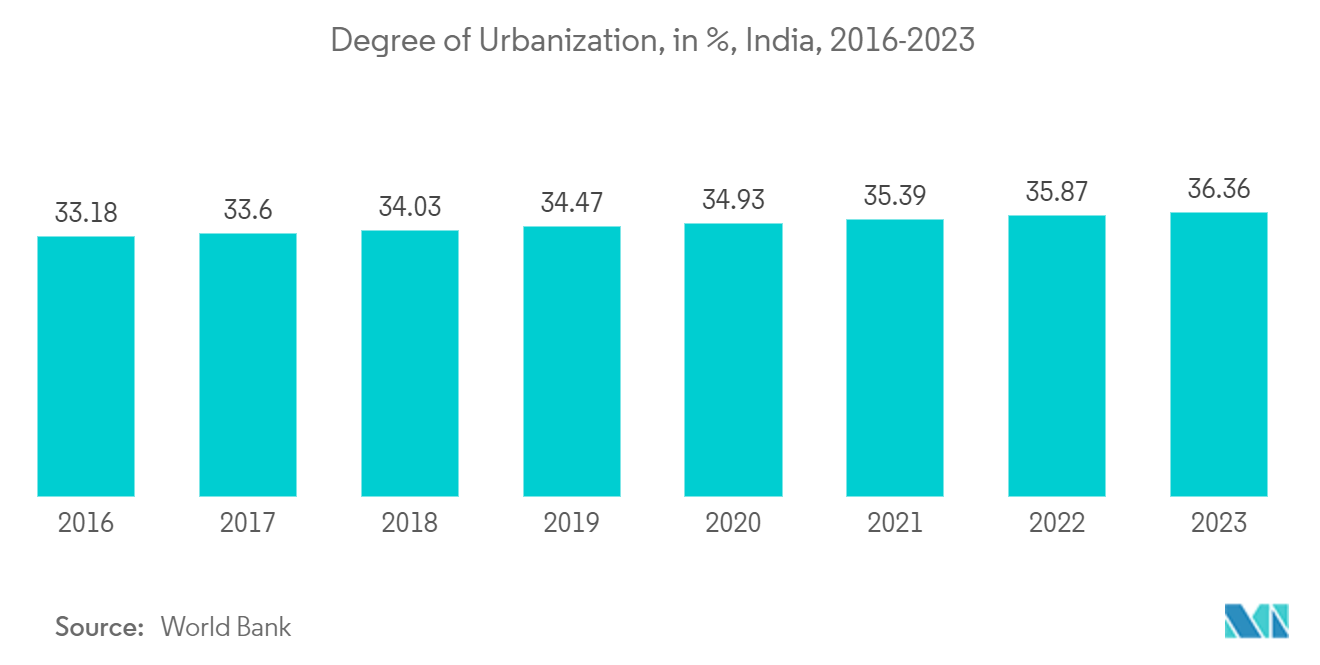Market Trends of Asia Pacific Surveillance IP Camera Industry
Government Sector Driving the Market
- In the Asia-Pacific region, the government segment is projected to continue to be a leading consumer of surveillance IP cameras. This trend is driven by an increasing number of initiatives and projects aimed at enhancing safety and security. For example, following a major earthquake in early 2024 and a rise in thefts and other crimes, Japan's government announced in January 2024 plans to strengthen security measures in central Japan. This initiative, led by the National Police Agency in collaboration with local police forces, targets installing around 1,000 security cameras, with a particular focus on evacuation centers.
- In December 2023, South Korea intensified its reliance on AI-driven surveillance as a measure against crime. Officials in Seoul unveiled plans to enhance the city's surveillance framework. The Seoul Metropolitan Government disclosed its strategy to install more AI-equipped closed-circuit television cameras in public parks and hiking trails, targeting areas previously vulnerable to crime. These developments further cultivate a conducive environment for the growth of the examined market.
- By 2026, South Korea aims to deploy 10,657 AI-equipped cameras in parks and hiking trails, particularly in areas experiencing higher crime rates and currently lacking surveillance. By the close of 2024, 4,748 of these cameras will be operational. The initiative also involves phasing out older cameras, starting with those below 1.3 million pixels. Such trends will also influence the demand for IP cameras in the region.
- Countries such as Singapore, Malaysia, and Indonesia are experiencing rapid urbanization. In response, these governments are significantly investing in surveillance systems to manage urban environments better and enhance public safety. Data from Indonesia's Statistical Authority highlights a surge in international tourism. In 2023, Indonesia recorded 11.68 million international visitors, a steady increase since 2021.
- Singapore's international visitor numbers in 2023 also jumped to 13.61 million, a sharp rise from 6.31 million in 2022. Malaysia also saw a significant boost, welcoming 20.1 million tourists, a 50% increase from the prior year. With safety being a crucial factor for tourists when choosing a destination, the region is poised for a substantial rise in the adoption of surveillance cameras, creating opportunities in the market.

India to Report a Notable Growth in Demand
- India is set to continue its status as a leading market for surveillance IP cameras. Government initiatives to enhance internal safety and security drive this market's expansion. For example, the Indian government is actively strengthening the nation's surveillance infrastructure. Through the Production Linked Incentive (PLI) Scheme, the government is promoting the domestic manufacturing of electronic components, including surveillance equipment. Additionally, the 'Make in India' initiative has spurred the emergence of local companies producing high-quality surveillance cameras. These efforts are fortifying the local supply chain of the surveillance camera industry, thereby positively influencing the market's growth.
- For instance, Prama India operates manufacturing facilities that produce high-quality video security products tailored to Indian standards and market demands. Several domestic companies like Zicom, Sparsh, Secureeye, Godrej, and CP Plus, among others, offer these products to Indian consumers at competitive prices. This accessibility bolsters the local surveillance camera ecosystem and fuels the growth of the surveillance IP camera market.
- Affordability is crucial, particularly since IP cameras generally come with a steeper price than their analog equivalents. The advantage of local production is becoming increasingly significant, especially as numerous businesses face tight budgets. As a result, many vendors are prioritizing a stronger local presence. For example, in January 2024, Johnson Controls, a leading US-based entity in smart security solutions, launched its new line of advanced security cameras. These cameras, crafted and manufactured in India, feature a localization rate surpassing 75%. This move underscores the company's commitment to the government's 'Make in India' initiative and signals intentions to shift entirely to local manufacturing soon.
- Recognizing the efficacy of Surveillance IP cameras, the government is increasingly turning to them for enhanced traffic management. In a notable example, the city of Guwahati in India has deployed the Integrated Traffic Management System (ITMS) cameras to curb traffic rule violations. Leveraging standard surveillance IP cameras, the Intelligent Traffic Management System captures videos for analysis. The police report an average collection of around USD 18,000 from violators since the ITMS installation.
- The Delhi Transport Department is set to roll out more than 5,000 cameras as part of its Intelligent Traffic Management System, aiming to reduce traffic violations. This move aligns with a growing trend in states such as Uttar Pradesh and Kerala and cities like Jaipur and Kolkata, where IP cameras have become a staple for traffic oversight. With India's vast population, the embrace of ITMS is on the brink of a significant upswing.
- Moreover, as urbanization intensifies in India, the nation increasingly prioritizes security and surveillance, especially in light of its historical security challenges. The World Bank reports that India's urbanization rate climbed to 36.36% in 2023, up from 33.18% in 2016. Consequently, these trends are expected to create new opportunities in the market under study during the forecast period.


